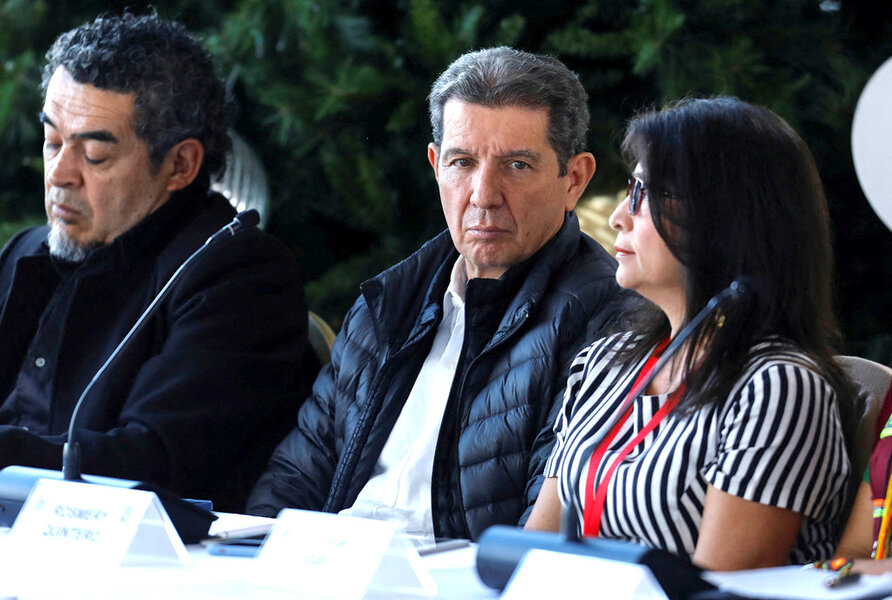A view of Colombia beyond violence
Loading...
When Gustavo Petro became Colombia’s president in August, his promise to end the violence that has traumatized his country for more than half a century brought both hope and skepticism. Four months later, hope has the edge.
That marks a sharp turn after the past four years, when Colombia’s security crisis flared defiantly under the hard-line tactics of Mr. Petro’s predecessor. The new president has started with a different approach: listening to the communities torn by conflict and illicit trade. Last week, the government concluded the last of 54 public meetings across the country. Although billed as part of Mr. Petro’s “total peace” initiative, the dialogues canvassed a wide range of social, economic, and environmental issues.
“People participated actively, and seriously believe that for the first time there is a government in Colombia that listened to them,” Wisne Hinestroza, a resident of the seaport city of Buenaventura who participated in one of the meetings, told the news website La Silla Vacía.
Mr. Petro’s plan is ambitious. Instead of pursuing peace one by one with dozens of guerrilla factions and drug cartels, he seeks to engage them simultaneously through what he calls “multilateral cease-fires.” He has promised to revive a landmark 2016 peace accord derailed by his predecessor. A broader, comprehensive peace will require complex agreements on disarming irregular factions, balancing forgiveness and punishment for groups implicated in drug trafficking or civilian massacres, and finding accord with neighboring states that have given them harbor.
But the foundation of the new strategy, said Danilo Rueda, Mr. Petro’s high commissioner of peace, is human dignity – a conviction that peace depends on rebuilding communities on the basis of equality and justice rooted in reconciliation.
There are early signs of progress. In September, Congress authorized Mr. Petro to negotiate with armed and criminal groups. Since then, 23 factions have agreed to join the process. An initial round of dialogue with the largest remaining paramilitary faction, the National Liberation Army, launched last month.
Even before any agreements are signed, however, a potent shift already underway may be in the expectations of ordinary Colombians conditioned over generations by cycles of conflict.
“We trust that this path undertaken will continue to show the Colombian people and the world that peace is possible, that we deserve a country without more death or war, where we promote and build social and environmental justice, reflecting a consciousness of true democracy shared by every Colombian,” said We Are Genesis, a network of more than 180 communities that have suffered violence by irregular groups, in a September statement. An Invamer Poll in October found that 61% of Colombians support the government’s approach to peace.
“We cannot see each other as enemies,” said Pablo Beltrán, head of the National Liberation Army delegation, before sitting down with government negotiators last month. One reason Colombia’s armed factions are bending toward reconciliation may be that the public’s desire for peace is turning into a stronger adhesive: an expectancy of good.







